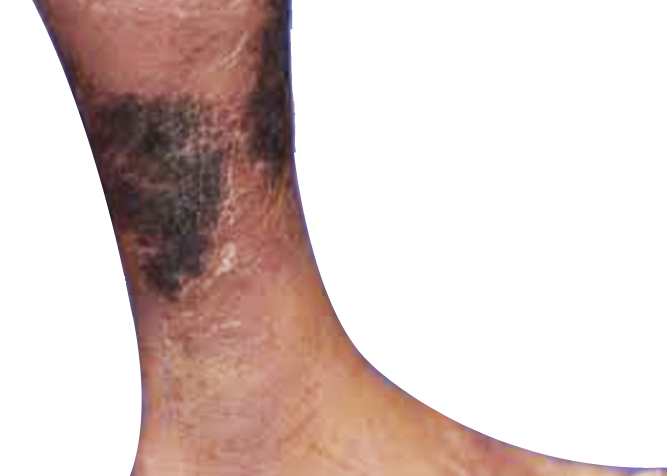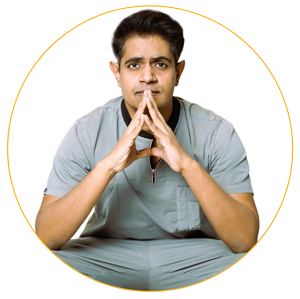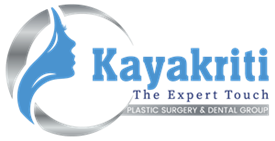Cellulitis/Abscess/Necrotising Fasciitis
The patients need to check their foot daily, assess according to the related risk factors already explained.

The patients need to check their foot daily, assess according to the related risk factors already explained and consult a plastic surgeon to stop progression of the disease. But there a few emergency conditions which, if not dealt immediately, may even lead to loss of the foot/leg and risk life. Conditions like infective abscesses, Cellulitis, Necrotising Fascitis and myositis can lead to gangrene of the limb and be life threatening also.
Cellulitis
Cellulitis is diffuse swelling and redness of the leg associated with pain and fever. Skin is stretched and shiny. Inflammatory exu date (infectious material) spreads in the subcutaneous and fascial planes resulting in a gross swelling of the affected part. If swelling persists or increase in size, it can lead to compartment syndrome (increase in pressure in muscles compartment). This causes severe pain and if not relieved can have life threatening consequences due to spread to infection to whole body. In this condition, urgent Fasciotomy is required.
- Patient has to be admitted in hospital
- Routine investigations are done, pus and blood culture and sensitivity
- Start with broad spectrum antibiotics
- Bed rest with legs elevated, this will reduce edema.
- Digital x-ray of the affected region is necessary to rule out any bony infection.
- Regular Dressings are done with Magnesium sulphate, it further decreases swelling by osmotic effect.
- If there is improvement in the swelling, regular dressing is done, medications for 5-7days given and then discharged with oral medications and explained about further management.
If swelling persists or increase in size, leading to compartment syndrome (increase pressure in muscles compartment), then urgent Fasciotomy is required. After this regular dressing are done daily.
In cases of large and dirty wounds, debridement is done along with fasciotomy.
After initial fasciotomy and debridement, Negative Pressure Wound Therapy (VAC) before definite procedure is done to reduce the toxins and infection in the body.
Definite Procedure to close the wound are done last which may be skin grafting, local or free flaps as per the requirement.
- Once the wound is healthy, skin grafting may be done if defect is not much deep and vitals structures are embedded in granulation tissue. In such cases, dressing is done every alternate day after surgery. Patient may be discharged after 5-6days, and regular follow-up is required.
- If defect is deep, any vital structures are visible, like blood vessels, nerve, bone or tendons exposed, in such cases, local flaps or free flaps are done.
- If there is ample amount of good tissue present in the surrounding area, then local flap is done to cover the vital structures.
- If the surrounding area is not healthy and the defect is too big, the microvascular transfer of flaps (free flap) isdone. After surgery, flap is being monitored regularly every 2 hours in the beginning. Dressing is done every alternate day and patient is admitted for at least 7-8 days and discharged once the flap is settled.
- In untreated cases, gangrene may occur, infection may lead to toxemia and septicemia i.e, release of toxins in the body by infectious organisms. Amputation may be required in such cases. In worst cases, even lead to death.
Necrotizing Fasciitis
Destructive infection of the skin and soft tissues. Patient develops sudden pain in the affected area and gross swelling of leg with rapid change in skin color to fiercer red and angry looking skin. Affected part will be red and multiple patches of skin necrosis (black colored skin). It is quite common in lower extremities of diabetic patients. High grade fever, jaundice and renal abnormality may occur in untreated cases. Individuals with diabetes mellitus, obesity, malnourished, decreased immunity and taking steroids for any ailment, are more prone.
Few cases referred to us are so debilitated and in bad condition with renal failure and septicemia, that even performing surgery on them is riskier and it requires a lot of understanding and support on the part of the attendants.
So early aggressive treatment is required to save the life of the patient.
- Patients require urgent admission, broad spectrum antibiotics started and surgical debridement is planned at the earliest.
- Digital x-ray of the affected region is necessary to rule out any bony infection
- Routine investigations are done, Pus culture and blood culture has to be sent.
- Debridement is done and the necrotic tissues and fascia is removed from the leg.
- Later patient is on regular dressings for about a week if the area is relatively clean and area is small.
- If the area is large and dirty after debridement, Negative Pressure Wound Therapy (VAC) before definite procedure is done to reduce the toxins and infection in the body.
Definite Procedure to close the wound are done last which may be skin grafting, local or free flaps as per the requirement.
- Once the wound is healthy, skin grafting may be done if defect is not much deep and vitals structures are embedded in granulation tissue. In such cases, dressing is done every alternate day after surgery. Patient may be discharged after 5-6days, and regular follow-up is required.
- If defect is deep, any vital structures are visible, like blood vessels, nerve, bone or tendons exposed, in such cases, local flaps or free flaps are done.
- If there is ample amount of good tissue present in the surrounding area, then local flap is done to cover the vital structures.
- If the surrounding area is not healthy and the defect is too big, the microvascular transfer of flaps (free flap) is done. After surgery, flap is being monitored regularly every 2 hours in the beginning. Dressing is done every alternate day and patient is admitted for at least 7-8 days and discharged once the flap is settled.
- In untreated cases, gangrene may occur, infection may lead to toxemia and septicemia i.e, release of toxins in the body by infectious organisms. Amputation may be required in such cases. In worst cases, renal failure may occur and even lead to death.
Abscess
Localized collection of pus. It can be due to different types of infection and can be superficial or deep. Abscesses are quite common in the legs or foot region of diabetic patients but can develop in any part of the body. Patient will have throbbing pain around the abscess. Fever may be present. Hence incision and drainage surgery is required to treat the abscess.
In untreated cases, it may increase and point towards the weakest area in the skin and can burst spontaneously or can spread inward to lead to more fulminant infections like cellulitis and necrotizing fasciitis of the whole limb. Therefore timely intervention of any infection of the skin under proper guidance of a plastic surgeon is mandatory to stop further progression of the infection to the whole body.
In all these emergency situation, main goal of the treatment is to drain the pus, or any extra fluid, and relieve the patient from pain and save the life and leg by stopping further progression of the disease. Infection is controlled by confirming the organism through blood culture report and using appropriate antibiotics.
At the same time blood sugar levels to be monitored and controlled by using insulin injections or oral medications.
Know your surgeon better

Best plastic surgeon, Dr. Amit Agarwal is an American Board Certified, extensively trained, and best Plastic & Aesthetic surgeon in Lucknow. He is the Chief Plastic Surgeon heading the Department of Plastic, Microvascular, and Craniofacial surgery at Vivekananda Polyclinic and Institute of Medical Sciences, Lucknow, U.P, India. He maintains a busy practice at Avadh and Nishat Hospital and his own center - Kayakriti Plastic Surgery & Dental Center. He was formerly a Consultant in the Department of Plastic Surgery and Burns at the prestigious SGPGI, Lucknow.
MS, DNB (General Surgery) MCh, DNB (Plastic Surgery),
MNAMS, FACS, FICS, FRCS (Edinburgh, UK)
His Credentials
Three pillars of kayakriti
Privacy
We believe your experience with us should be comfortable and hassle-free to make it one of your best lifetime experiences for yours. We, here at the clinic, take full precautions to maintain your privacy in any manner. We also provide a staff who will receive you from the gate and take you to the chamber directly if you demand.
Trust
Our Surgeon is highly qualified and internationally certified with a team of skilled staff to perform any surgical or non-surgical treatment on your body.
Safety
When you plan to undergo any surgery you should always keep in mind that it's your body and it's a surgery. We, here always keep your safety a priority and will never recommend you to undergo any such procedure which is not safe for you. We also provide you with a detailed description of the complications which may occur after the surgery during the consultation as it's a surgical procedure so there may be some complications depending on the way your body reacts.
Kayakriti in news



Frequently Asked Questions
If you have flat or small breast and you want to improve your breast and hip contour ratio then you are a good candidate for it. The answer will be best provided after the first consultation with Dr Amit Agarwal.
Acute pain will be there for almost a week which gradually reduces and there will be soreness and swelling which may take up to 3 weeks to subside.
You can join your work and daily routines after a week of the procedure and can start exercising after 3 weeks of it.
Yes, you have to wear it round the clock unless we suggest you to remove it.
This surgery does not affect the ducts or the areas of the breast involved in milk production. Thus, it does not affect the breast feeding.
This surgery does not affect the ducts or the areas of the breast involved in milk production. Thus, it does not affect the breast feeding.












Kayakriti Plastic Surgery & Dental Center
D-43, Near Punjab National Bank, Rajajipuram, Lucknow, Uttar Pradesh - 226017, India
Phone No. +919695940009, +919695940006
Map Location





























Social Media Presence